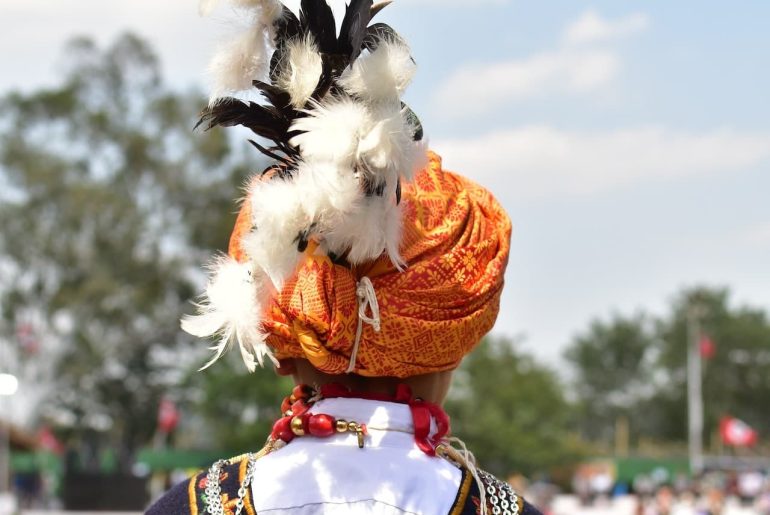Meghalaya is a state in Northeast India known for its stunning landscape and rich culture. Meghalaya Dance Form plays a crucial role in Meghalayan traditions and beliefs. The state has three tribes with unique languages, cultures, and practices. Meghalayas festivals and dances celebrate nature’s abundance and are often linked to the agricultural cycle. Dance is an essential part of religious ceremonies and social occasions. It is considered a way of connecting with the divine, and the dance forms help preserve Meghalayas cultural heritage and identity. These traditional dances have been passed down for generations and are an integral part of the state’s social fabric.
The significance of dance in Meghalaya culture
Meghalaya Dance Form plays a significant role in Meghalaya’s spiritual and ceremonial traditions. Various dances are performed during festivals like Nongkrem and for goddesses of prosperity and wealth. They also mark important life events like the transition into adulthood. Meghalaya Dance Form has been passed down from generation to generation, preserving the state’s cultural heritage. The younger generations are now involved in ensuring their continued existence. Meghalaya’s traditional dance forms help to maintain its unique identity and rich cultural past.
Exploring the popular Meghalaya dance forms
Nongkrem dance
Nongkrem Dance is one of the most popular dances in Meghalaya and is performed by the Khasi tribe during the annual Nongkrem festival. Men and women dance, and each dancer wears traditional attire and jewelry. The dance movements are slow and graceful, and the music is provided by a group of musicians playing traditional instruments.
Shad Suk Mynsiem
Shad Suk Mynsiem is another popular dance form performed by the Khasi tribe. The dance is performed during the harvest season to seek the blessings of the goddess of wealth and prosperity. The dancers wear traditional attire, and the dance movements are energetic and lively.
Wangala dance
The Garo tribe performs Wangala Dance during the Wangala Festival, celebrated to mark the harvest season. The dance is performed by both men and women, accompanied by traditional music and instruments. The dancers wear bright and colorful attire, and the dance movements are energetic and vibrant.
Other popular Meghalaya dance forms
Besides the dances mentioned above, Meghalaya is home to several other popular dance forms like Laho, Shad Nongkrem, Doregata Dance, and others. Each dance has its unique style, movements, and costumes, all reflecting Meghalaya’s rich cultural heritage.
The history and evolution of Meghalaya’s traditional dance forms

The origins of traditional dance forms in Meghalaya Dance Form are unclear, but they have been passed down and evolved, reflecting the state’s history and cultural beliefs. Some dances have adapted to modern influences, while others remain true to their essence of celebrating Meghalaya’s cultural heritage and traditions.
Traditional music and costumes of Meghalaya dances
Meghalaya Dance Form is known for its diverse dance forms, each with unique costumes, music, and style, traditionally performed at weddings, harvest festivals, and religious ceremonies. The most commonly used instruments in Meghalaya music include drums, flutes, and stringed instruments like the King and Duitara. The colorful and intricate costumes reflect the region’s rich heritage, with women wearing a Jainsen skirt, blouse, and Tapmohkhlieh shawl and men wearing a dhoti and shirt. Dancers also wear jewelry made of silver, brass, and beads, and a headgear called a Tiar adorned with feathers and flowers.
The role of Meghalaya dance forms in contemporary society
Meghalaya’s culture is unique, and traditional dance forms are vital in preserving and showcasing its rich heritage. The state’s culture is essential for its identity and ensuring that future generations benefit from it. Meghalaya dances not only preserve culture but also bring communities together and promote a sense of unity, such as the Wangala Dance celebrated during the harvest season.
Conclusion
Meghalaya dance forms are essential in preserving and celebrating the state’s rich cultural heritage. Meghalaya dance forms are integral to the state’s rich cultural heritage. They reflect the people’s history, beliefs, and traditions and play a crucial role in keeping these traditions alive. Sharing this culture with the world is essential for promoting cultural exchange and understanding. We can celebrate this unique culture for generations by appreciating and preserving these dances.






